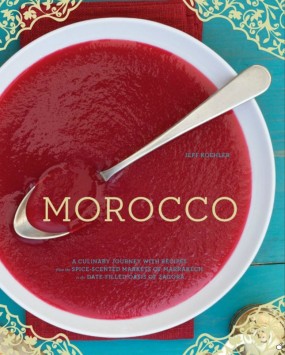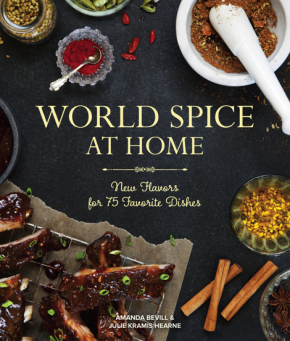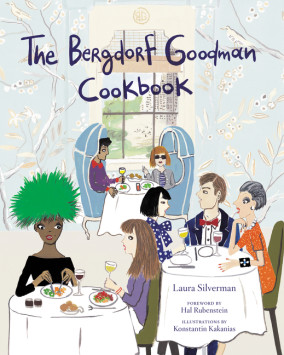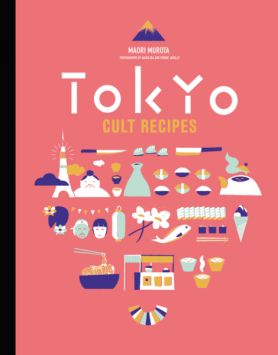Heirloom KitchenHeritage Recipes and Family Stories from the Tables of Immigrant Women
A gorgeous, full-color illustrated cookbook and personal cultural history, filled with 100 mouthwatering recipes from around the world, that celebrates the culinary traditions of strong, empowering immigrant women and the remarkable diversity that is American food.
Born in Italy, Anna Francese Gass came to the United States as a young child and grew up eating her mother’s Italian cooking. But when this professional cook realized she did not know how to make her family’s beloved meatballs—a recipe that existed only in her mother’s memory—Anna embarked on a project to record and preserve her mother’s recipes for generations to come.
In addition to her recipes, Anna’s mother shared stories from her life in Italy that her daughter had never heard before, fascinating tales that whetted Anna’s appetite to learn more. So, Anna began reaching out to her friends whose mothers were also immigrants, and soon she was cooking with dozens of women who were eager to share their unique memories and the foods of their homelands.
In Heirloom Kitchen, Anna brings together the stories and dishes of forty strong, exceptional women, all immigrants to the United States, whose heirloom recipes have helped shape the landscape of American food. Organized by region, the 100 tantalizing recipes include:
- Magda’s Pork Adobo from the Phillippines
- Shari’s Fesenjoon, a walnut and pomegranate stew, from Iran
- Tina’s dumplings from Northern China
- Anna’s mother’s meatballs from Southern Italy
In addition to the dishes, these women share their recollections of coming to America—stories of hardship and happiness—that illuminate the power of food, and how cooking became a comfort and a respite in a new land for these women, as well as a tether to their native cultural identities.
Accented with 175 photographs, including food shots, old family photographs, and ephemera of the cooks’ first years in America—such as Soon’s recipe book pristinely handwritten in Korean or the measuring cup Anke tucked into her suitcase before leaving Germany—Heirloom Kitchen is a testament to female empowerment and strength, perseverance, diversity, and inclusivity. It is a warm and inspiring reminder that the story of immigrant food is, at its core, a story of America.
Profiled women and countries:
Gina (Calabria, Italy)
Maria (Calabria, Italy)
Lisetta (Sardinia, Italy)
Kanella (Greece)
Stacey (Scotland)
Emilia (Ukraine)
Tsilia (Ukraine)
Marina (Moscow)
Bea (Serbia)
Monika (Poland)
Susanne (Hamburg, Germany)
Anke (Berlin, Germany)
Tina (North China)
Daisy (South China)
Chizuko (Japan)
Soon (Korea)
Magda (Philippines)
Lydia (Philippines)
Khurshed (India)
Shobhana (India)
Shari (Iran)
Cheri (Iraq)
Lucy (Armenia)
Irene (Lebanon)
Shekaiba (Afghanistan)
Fethie (Palestine)
Nikita (Haiti)
Janet (Mexico)
Haydee (Puerto Rico)
Rocio (Peru)
Angela (Cuba)
Maria (Dominican Republic)
Morgana (Brazil)
Sheila (Panama)
Jennipher (Ghana)
Safoi (Morocco)
Amina (Egypt)
Anna Francese Gass is a graduate of the French Culinary Institute. After a stint in corporate sales, she traded the boardroom for the test kitchen, and has since worked for Whole Foods, Mad Hungry, and Martha Stewart Living Ominmedia. Currently, she is a regular contributing editor and recipe tester at Food52 and contributing writer for msn.com. She lives in Connecticut with her husband and three children. Follow her on Instagram @annafgass and website www.annasheirloomkitchen.com.
“This book is a celebration. I think in, our kind of crazy times, we need more of that and celebrating what makes us similar as opposed to what makes us different.” Said first time author Anna Francese Gass when she spoke to us about her book Heirloom Kitchen. It seemed to us to be a perfect description.
Books About Food (BAF): This your first book…
Anna: Yes, my first book. I started the project back in 2014 and a couple of years ago got the book deal and here we are today.
BAF: Now when you say you started, did you intend to write the book or was it something online or is this…?
Anna: No, so this all started as a project with my mother. I’m a recipe tester by trade, I have worked on many cookbooks, for Delicious, GQ, Martha Stewart and I realized four or five years ago that I didn’t have any of my mother’s recipes written down so as an Italian immigrant she’s cooking from her head and she still cooks so many things for us that I realized that I needed to get these recipes recorded. So it started out as project with my mother and I had, kind of, an ‘Aha!’ moment that I thought ‘wow’ this is a service I could provide for my friends. I have so many first generation friends and I would really be able to do something special for families and also for myself because I get to learn all these international recipes. So I started a blog, Anna’s Heirloom Kitchen, and I started traveling to the homes of friends that had a mother that was an immigrant with all these amazing recipes that we know here in the US but I got them from the source.
And then it really exploded because I went from one kitchen to the next, word-of-mouth, ended up meeting 40 women, covering 35 countries and got a deal with HarperCollins two years ago to make it a book.
BAF: So I guess you could say that this started off as maybe a culinary identity crisis, somewhat?
Anna: Well, I mean I don’t think it’s an identity crisis. I’m very proud and happy to be Italian.
Its more identity preservation because as with each generation we get farther and farther. Someone said it very well to me, they said “Most of the time when they meet someone they’re more American-Italian than Italian-American,” which is you true you know. You have the generations that come over that have accents and they’re the first ones here and then, as the generations that follow, especially with the Italian and the Irish, some of the earlier settlers that came over, the Chinese, their children now sometimes marry, obviously, outside of the culture to a different culture and you just don’t want to forget the original members. The original people that came over so, especially for my children who are incredibly close with my mother, my mother speaks to them in Italian, they answer in English. I don’t want them to forget where I came from and where my mother came from. And you learn that through food, right? That’s kind of how we identify. Food is culture.
BAF: So obviously you knew your mother was Italian, but did you start cooking with her on such a new level? Did you learn anything new about your own culture or your own background or your family?
Anna: I did, I did. It’s funny when you’re in the kitchen, and this is why the book I think is so special, because it’s not just the recipes, it’s the women’s stories. When I went to everyone’s homes, I didn’t do anything over the phone, I physically got into the kitchen with each person and cooked. And what I realized, not only with my mother but with these women, is that when you’re cooking with someone it’s so intimate and personal that people’s inhibitions really run away and you’re able to hear the true story. And what I learned is where they came from, why they came here, and I developed such a deep appreciation for my mom because, as a child, you don’t really think about the fact that your mom has an accent and she is navigating this new world. Her parents were back in Italy so she didn’t have that support. And now, as a mother myself, I lean on my parents so much I really appreciate everything that she went through and that all these women went through, coming over here and starting anew.
And also, which was really nice of my family in particular, is I heard so many stories that I had never heard before. Why my grandmother makes the meatballs the way she did or who taught her how to cut the pasta so I got so much family history kind of weaved into our recipe session and that was just a bonus gift really.
BAF: These 40 women you worked with, which sounds like a marvelous experience, were they from 40 different countries.
Anna: 35. And what ended up happening was, and this is also part of my, I got so much education in this process because I really had to learn my history. There’s a lot of things that we’re not taught in the American school system about immigration and I also learned a lot about food culture and food history. For example, when I cooked with someone from China, the first person I cooked with was from Hong Kong. So she’s teaching me all the dishes and she actually said to me, “You should try to get a northern Chinese woman for your book because our cuisine’s are different.” Her family was close to the water, so they eat a lot of fish and they eat a lot of items that are non-wheat items because it’s just not available. But then you go to northern China and that’s when you’re getting the noodles and the dumplings, and I didn’t realize that. You think Chinese, you think dumplings and Lo mein. Well southern China, they don’t really eat Dim Sum. They don’t eat those things that we think of when we think of Chinese food.
She was absolutely right so then I was able to find a northern Chinese woman, who did teach me how to make dumplings, and it was just so nice that I was able to represent China in a very genuine way depending on where you are in China, you’re represented in a book and that also happened in Germany. I cooked with someone from Berlin and she said, “You should really try to get somebody from Hamburg because one of them is more sausages because, obviously, they’re the closest to Vienna and then the other side, they don’t really eat as many sausages and potatoes. So that was very nice. That’s kind of why I have less countries than women because some countries. Also same thing happened in Italy trying to get somebody from the north and, then obviously, my mother and one other woman from the south. It ends up being really nice to represent a country that has cuisine throughout the region.
BAF: That was actually my next question about Italy as well so. I don’t even need to be here. You talked about languages and did you have any language issues or did things just play out?
Anna: Yeah so I only had one woman, the woman from the Dominican, who speaks very little English. Her son came along and he translated and through hand gestures and laughing and whatever, we were able to get through it. The rest of the women spoke English. Many of them had been here 30, 40 years so their English is very, very good and, I also just have this theory that growing up in a home with an Italian mother with an accent and all of her friends having accents, that I just have a knack for understanding people with an accent regardless of where they’re from. And I also think that when you really care and you talk to someone with an accent, as long as you’re listening, you hear them, and understand. So no, I didn’t really have an issue but like I said, most of these women, actually all of the women except the one from the Dominican have been in the States for a very long time and they’ve gotten jobs and conducted their lives that their English was very good.
BAF: How did you find these women? Such an eclectic and interesting group.
Anna: Originally, I reached out to friends. I went to NYU for college and I just realized I had all these friends that were first generation just like me. Maybe a happy accident, maybe I was just drawn to people that had parents and you just are drawn to people with a similar life experience to you. I have this theory, growing up in a home where your parents aren’t from the US, you get a more dynamic world perspective of things.
Not to disparage someone that isn’t in an immigrant family, but I just think maybe that’s why I was drawn to other people that also had immigrant parents. So that was already a nice pool of people, that was probably my first 15 appointments and then, what happened was, when I got into the kitchen a lot of the women would say, “Oh, you need to cook with my friend. She’s from Iraq and she makes the best dot, dot, dot.” And then I’d go to that house and she’d say, “Oh you need to cook with my friend from this place.” So that was really wonderful that I ended up jumping, really, from word-of-mouth. And then once I got towards the end of it, my editor and I sat down and we said, “Okay, we really want to make sure that we represent every continent. We can’t obviously cover every country. There’s a limited number of pages in the book but where are some holes that we could fill in?”
And we had, at that point, one woman from Africa but Africa is so vast and diverse and you could do a book just on Africa because there are so many different tribes and regions and just different types of food within. But we said, “Okay we have Morocco. Let’s see if we can really get someone else.” And my editor said, “There’s so many people from Ghana in the US. Let’s see if we can get someone from Ghana.” And that was the only time I really reached out online through social media and said, “Hey, I would love to cook with a woman from Ghana. Does anyone know anyone?” And my sister’s friend’s co-worker, mother was from Ghana, also lived in Connecticut and off I went.
The one from Ghana, I kept saying the food of Ghana and she’s like, “Well this is known in Ghana but you have to realize, we are part of the Ashanti tribe so this is really the food of the Ashanti tribe and Ashanti people will know this food. So I couldn’t even really just say this woman is from Ghana because it’s very specific in the tribes. So that’s fascinating. So yeah, you could really just do a book on African cuisine.
I think one of the biggest lessons I learned in this book, and again I was always such a social studies buff in high school that was one of my favorite subjects, so it’s kind of like so many things in my life led me to this project. But I also realized how many holes that weren’t filled in, and the other thing is we really think about the United States as this big melting pot of cultures but so many places in the world that you think, “Okay everyone here is of that indigenous race is not the case.” A lot of people wouldn’t like to hear this, but in other parts of the world borders are very arbitrary because there was so much trade and commerce back-and-forth that I was shocked to see how similar Egyptian cuisine was to Greek cuisine. Two places that I didn’t really connect, but their food is very similar.
BAF: Mediterranean trading routes.
Anna: Exactly.
BAF: This might be a loaded question, maybe you can’t even answer it but were there any other big culinary discoveries for you.
Anna: Yeah like I said just how similar we all are. When I found those common threads in the cuisines just how many cultures, for example, use phyllo dough. A lot more than you might think. I’d always kind of associated phyllo dough with Greek and that’s not the case at all. The Lebanese women use phyllo dough, the Serbians women use it, the Egyptian women so phyllo dough is all over the place and, again, that’s also through immigration between all these different places. I didn’t even realize but Mexico has a very large Greek community so I think the biggest culinary ‘Aha’ for me was how, I don’t know I guess this is going to sound very hokey, but how in our differences we’re all very similar.
BAF: You’ve got this book out, so what’s next for you?
Anna: It’s so funny. Everyone keeps saying, but I’m really not focused on next, I’m focused on now. The book is out. I’m incredibly, incredibly proud with how it came out. I think, one thing I can say quite honestly is I wouldn’t change a page of this book. I’m so proud of how it came out, every photo, the ephemera, the women, their portraits, everything. I just really want to get the word out about this book, sell the heck out of it, and then we’ll see where he road takes me. I’m a planner by nature so it’s very odd for me to be saying these things but it’s truly how I feel. So I don’t know next, world domination?
BAF: Maybe I can ask quickly what about the book tour, how is that going?
Anna: It’s been so gratifying. Last night, I had an event at the Library in New Canaan which is where I live. We had over 80 people show up. The book sold out. Every book that the library had sold out. I actually had to go to my car and get books out of my trunk because people were still in line and, just, people really get it. They really get what I did and someone will walk up to you and they start talking to me about their DNA testing that they just did and they found out that they’re two percent Tunisian or whatever it is but people are very, very responsive to the book. And I think people are very much now, with all this genealogy, what’s going on in politics, just the very hyper-aware world that we living in, this book is very timely. And it was a happy accident. Like I told you, I started this book five years ago. There’s absolutely no political motivation behind it.
This book is a celebration. I think in, our kind of crazy times, we need more of that and celebrating what makes us similar as opposed to what makes us different. And focusing on our differences, I think is just toxic and I’m proud to have something that focuses on how similar we all are. I really love that people are getting that and that they come up to me and say, “Yes, I love what you’re doing.” Or they say, “You know I have this rule. I wasn’t going to buy any more cookbooks but I’m breaking my rule for this book.” And I can’t get any better praise than that.
BAF: That sounds wonderful and I didn’t know, if other people commenting say, “Well for your next book you should include this cuisine or that cuisine.”
Anna: Yes, yes I’m getting that which is so great. No, what they’re coming up to me and saying is, “Oh, I have the woman you have to cook with next.” So, Lord willing, something else comes out of this, a sequel or whatever have you. Yes, I already have people electing friends, volunteering to be in it so they saw how well the first 40 were treated, I think.
BAF:After world domination you can focus on that I guess.
Anna: Right. Yeah absolutely, let’s keep that out of the article though.
BAF: No worries. It’ll be our secret.
Booksaboutfood.com Copyright 2019
“Heirloom Kitchen is a stunning book that delves deeply into the rich cooking traditions of immigrant women and the immense legacy they have left on the American palate and food customs. The cooking of immigrants is the foundation of American food culture.” – Jacques Pépin, chef, bestselling author, and television personality
“Food is culture. Heirloom Kitchen is a deliciously soulful look at the complexities of our American identity, and highlights one of the principle ways in which the past has always been female. Here is an inspiring look at a diverse group of a few of our founding females.”– Anita Lo, author of Solo: A Modern Cookbook for a Party of One
“The from-scratch recipes of our immigrant families are the most important ones to preserve in our takeout, premade world. Anna shows us how to smell the sauce and hear the sizzles of our own unsung home-cook forebearers, while also sharing delicious traditional recipes from around the world.” – Lucinda Scala Quinn, founder of Mad Hungry
“Anna has a wholehearted conviction that cooking and self-expression are one and the same. It made sense that she took on this ambitious celebration of immigrant women, paying tribute to their remarkable personal stories and best-loved dishes, as well as the inextricable nature of the two.” – Merrill Stubbs and Amanda Hesser, co-founders of Food52











Leave a Reply